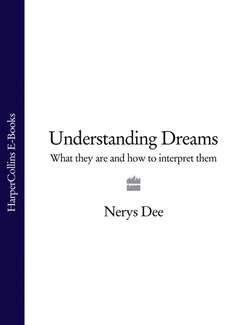Читать книгу Understanding Dreams: What they are and how to interpret them - Nerys Dee - Страница 24
REM and non-REM sleep
ОглавлениеIn the 1960s it was clear that brain waves altered from Beta to Alpha when a subject closed his or her eyes. This was thought to be due to cutting off visual impulses from the outer world. It was further discovered that sleep, a stage beyond closing the eyes, could be divided into six levels which were labelled A, B, C, D, E and F. A represented light sleep and B, C, D, E and F levels represented progressively deeper sleep.
Associated with these levels are two distinct types of sleep. These have been called REM (Rapid Eye Movement) and NREM (non-REM) sleep. Early sleep, known as ‘quiet sleep’, is NREM sleep. There are several NREM phases throughout the night, the first lasting approximately 90 minutes, followed by a short REM phase which lasts about 10 minutes. Throughout the night NREM and REM phases alternate. Initially, the NREM stages are longer, then, as the night progresses, they become shorter and the REM phases take up the majority of sleeping time.
REM sleep is recognised by small twitches of facial muscles and slight movements of the hands. If snoring occurs during NREM sleep, this stops and breathing becomes laboured. Arms and legs are paralysed and the sleeper is unable to move. Blood pressure rises and the heartbeat increases as if the body is under physical exertion. Most significant of all, the eyes begin to move rapidly from side to side under closed eyelids, as if looking at a moving object. Researchers have discovered that when a sleeper within the REM stage is awakened, they invariably say they had been dreaming.
It is in the level of sleep recognised as F, that is, deep REM sleep, that eye movement is greatest. It is known that visual dreaming takes place during these phases but what was not realised until recently was that when those in NREM phases were awakened, they too thought they were dreaming. Subjects who were constantly awoken during the night (in particular during REM sleep which meant they were deprived of visual dreaming), became irritable, nervous, bad tempered and behaved out of character generally. It can, therefore, be concluded that we sleep so that we can dream.
